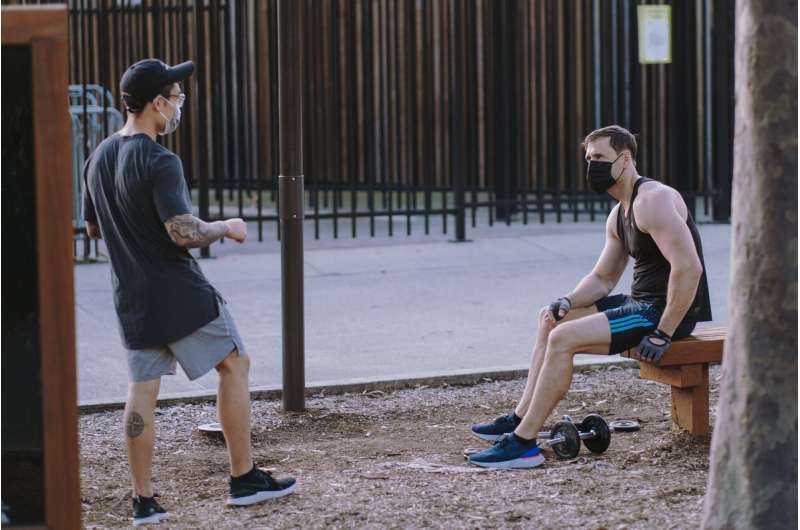Researchers find patterns and predictors of physical distancing adherence

The flouting of public health recommendations, the on-and-off adherence to safety guidelines, the bending of rules to break isolation—these are not new phenomena when it comes to the COVID-19 pandemic. The behavior was being observed during the first wave, in the spring of 2020, and has continued consistently over most of the year. In general, though, a solid 50 percent of Quebecers have strictly observed the provincial government’s directives to remain physically distant from one another.
A newly published study led by Concordia University researchers takes a close look at who observed physical distancing guidelines, who did not, and who followed them when they could.
“We wanted to identify different patterns of adherence to physical distancing. The idea was to see if we could find differences in these groups in their beliefs about the pandemic and physical distancing that would explain their particular adherence behaviors over time,” says the study’s lead author Sasha MacNeil, a Vanier Scholar and Ph.D. candidate in clinical psychology.
First wave study
The longitudinal study was conducted in three waves over the course of 2020, the first year of the outbreak. The researchers recruited a cohort of 1,003 adults representing Quebec’s population in terms of age, gender and urban/rural dwelling, to participate in the study.
They collected data over three distinct periods: Between April 7 and 15, not long after the first physical distancing directives were issued; between May 19 and June 7, when those measures were being eased somewhat as the first wave of infections abated; and from September 28 to October 18, as the second wave began. About two-thirds of participants returned data from all three periods, answering questions about their demographics, their beliefs about the pandemic and the utility of physical distancing and their adherence to physical distancing, among others. The researchers used group-based trajectory modeling to identify subgroups of adherence in the sample.
The findings, published in the journal Psychology & Health, reveal four distinct trajectories of physical distancing that respondents to an online questionnaire followed. The largest were labeled “high adherents” because they consistently followed guidelines over the study period. They constituted 50 percent of respondents.
The second largest group, some 32 percent, were called the “slow decliners.” Their adherence gradually tapered off after initially high levels of adherence, although they remained highly adherent over time. Ten percent of respondents fell into the “fluctuating adherents.” Their behavior changed dramatically from the end of the first wave, when they stopped following health directives, to the beginning of the second, when they strongly adopted them again. The final group, the “fast decliners,” whose adherence dropped quickly, made up only eight percent of respondents.
‘We can help people overcome barriers and build self-efficacy’
According to the researchers, certain beliefs were common to all three groups who exhibited poorer adherence compared to those who were highly adherent: Perceptions of lower self-efficacy, meaning they usually felt that they could not follow the guidelines as they were laid out; higher barriers, meaning the requirements imposed too great a burden on their daily lives; and that they reported lower prosocial attitude, meaning they did not have particularly high feelings of civic or moral duty to maintain physical distancing, nor did they see these behaviors as helpful to protect others.
“We don’t want to just assume that people who aren’t adhering are being negligent or contrarian. Rather, they seem to encounter greater obstacles to adhering and don’t evaluate the utility of physical distancing the same way,” MacNeil explains.
Source: Read Full Article


